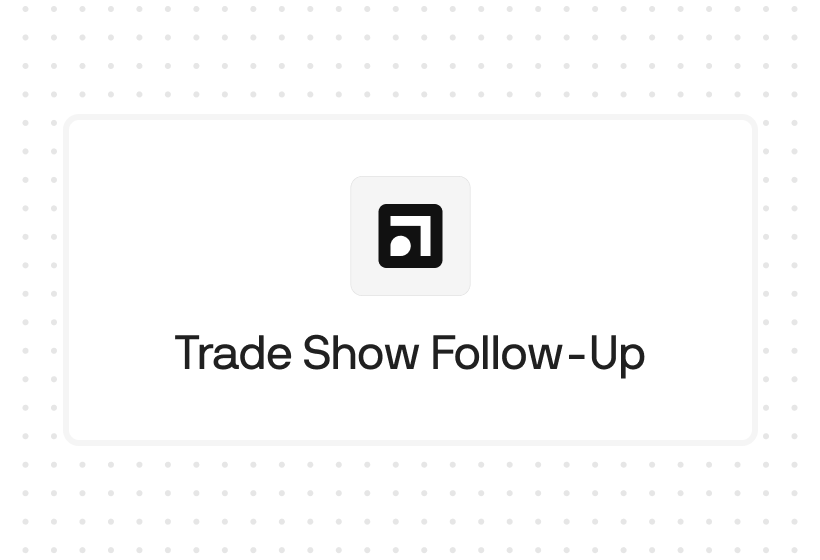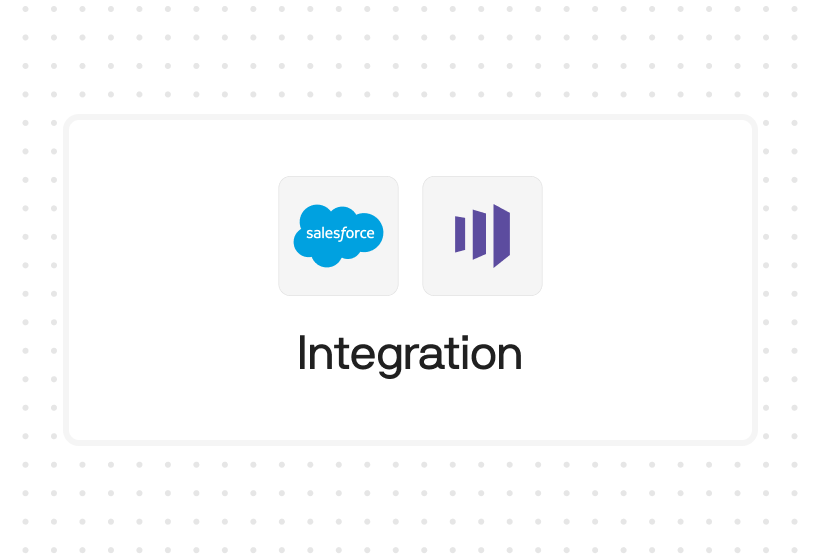Try Default

See how revenue teams automate revenue operations with Default.

Key Takeaways
Key takeaways
- Default – best for RevOps and GTM leaders scaling inbound workflows
Orchestrates lead scoring, routing, scheduling, and CRM hygiene in real time—without code or engineering. - ZoomInfo – best for enterprise teams running large-scale outbound
Offers expansive data and intent signals, but requires budget, setup time, and admin oversight to get full value. - Clearbit – best for growth marketers personalizing web experiences
Great for identifying high-fit visitors and syncing ad audiences—just expect to pair it with other tools for routing or qualification. - LeadIQ – best for SDR teams focused on outbound contact capture
Fast and efficient for scraping and syncing contacts, though not designed for full-funnel workflows or inbound speed. - If your team’s focused on converting leads—not just capturing them—Default gives you the automation layer the others don’t.
If you’re using Lusha in 2025 and it’s no longer meeting your team’s needs, you’re not the only one.
A lot of GTM and RevOps leaders hit the same wall: Lusha gives you data—but not what comes next. It won’t tell you which leads are high intent, who should own them, or how to get that meeting booked before someone else does.
And in fast-moving inbound funnels, that gap hurts.
Because while static enrichment is fine for early-stage prospecting, it breaks down when you’re juggling routing logic, SLAs, and conversion speed across your stack.
The good news? There are better-fit alternatives—tools that not only surface contact data, but activate it in real time.
In this guide, we break down the top Lusha competitors, what they’re built for, and where they fall short. Whether you’re scaling inbound, accelerating outbound, or tightening RevOps workflows, this comparison will help you choose the right tool for your next stage of growth.
Default – Best for RevOps and GTM teams automating inbound workflows
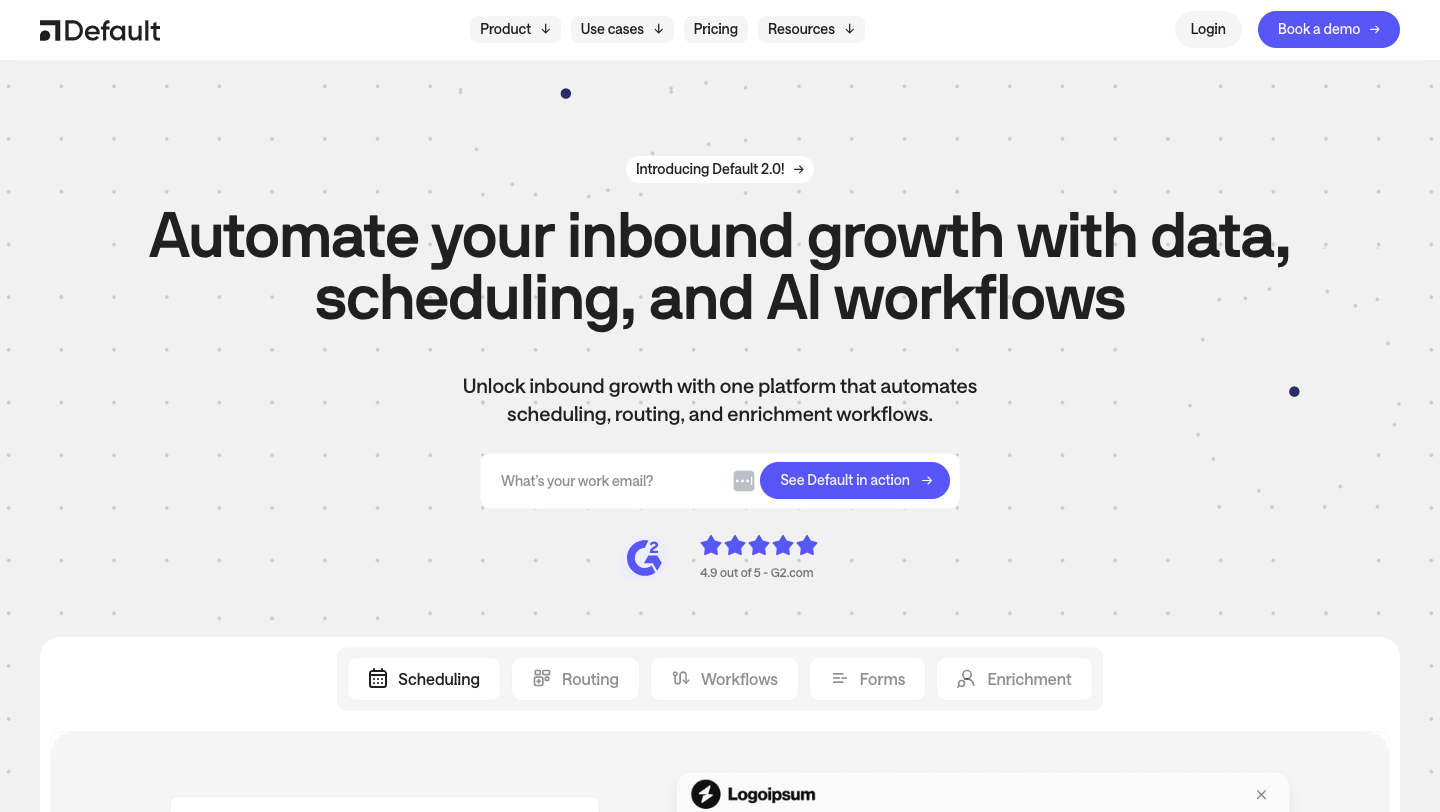
Lusha gives you data. Default gives you action.
Default is purpose-built for RevOps and GTM teams who are past the point of manual lead handoffs, enrichment delays, and duct-taped routing logic. It acts as a real-time orchestration layer—enriching, scoring, routing, and scheduling leads within seconds of form submission, with full CRM sync and zero engineering lift.
Unlike static enrichment tools, Default doesn’t just surface information. It automates the full path to conversion, removing bottlenecks and turning high-intent leads into booked meetings before they go cold.
Key features
1. No-code visual routing builder
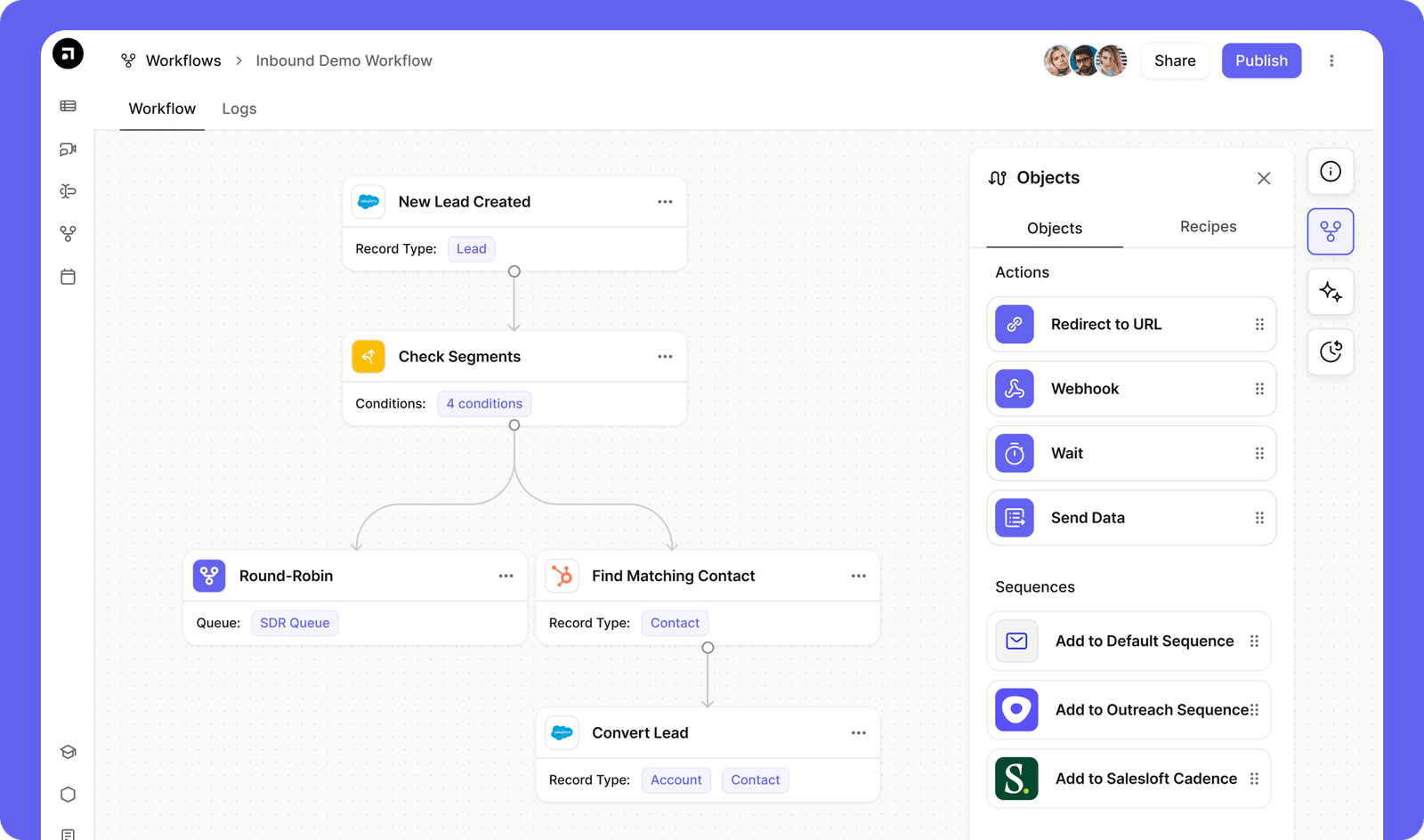
Visually configure how leads are assigned in real time based on firmographics, intent, ownership, or capacity, without writing code or filing dev tickets.
- Routing by territory, product line, or rep availability
- Assigning leads via round robin or capacity-based logic
- Triggering fallback paths if no rep is available
2. Layered enrichment + scoring on form submission
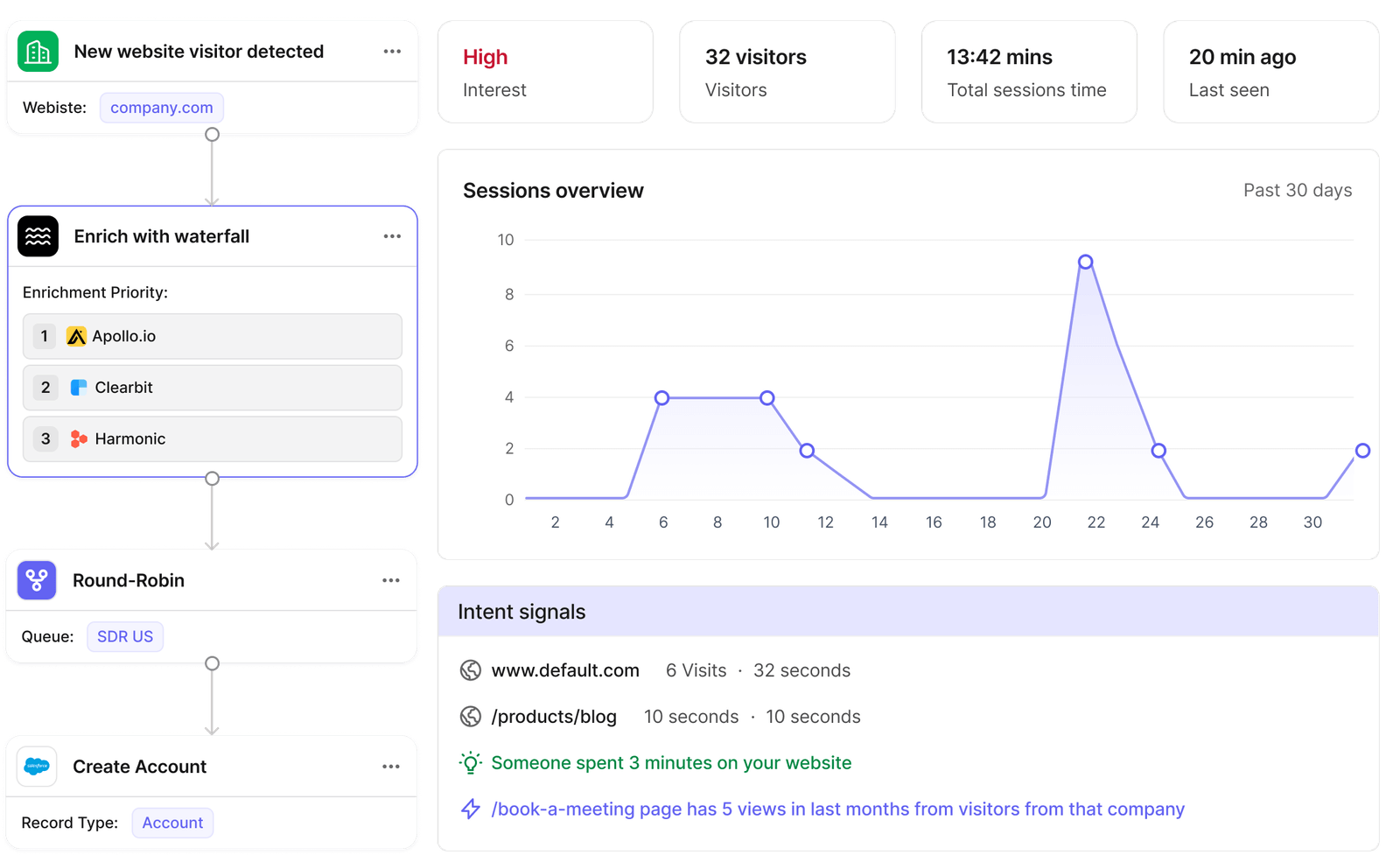
Default enriches leads the moment they submit a form, combining first-party data with third-party enrichment to calculate a score based on your custom ICP logic.
Result: reps get qualified, ready-to-work leads instantly.
3. Automated meeting booking from form to calendar
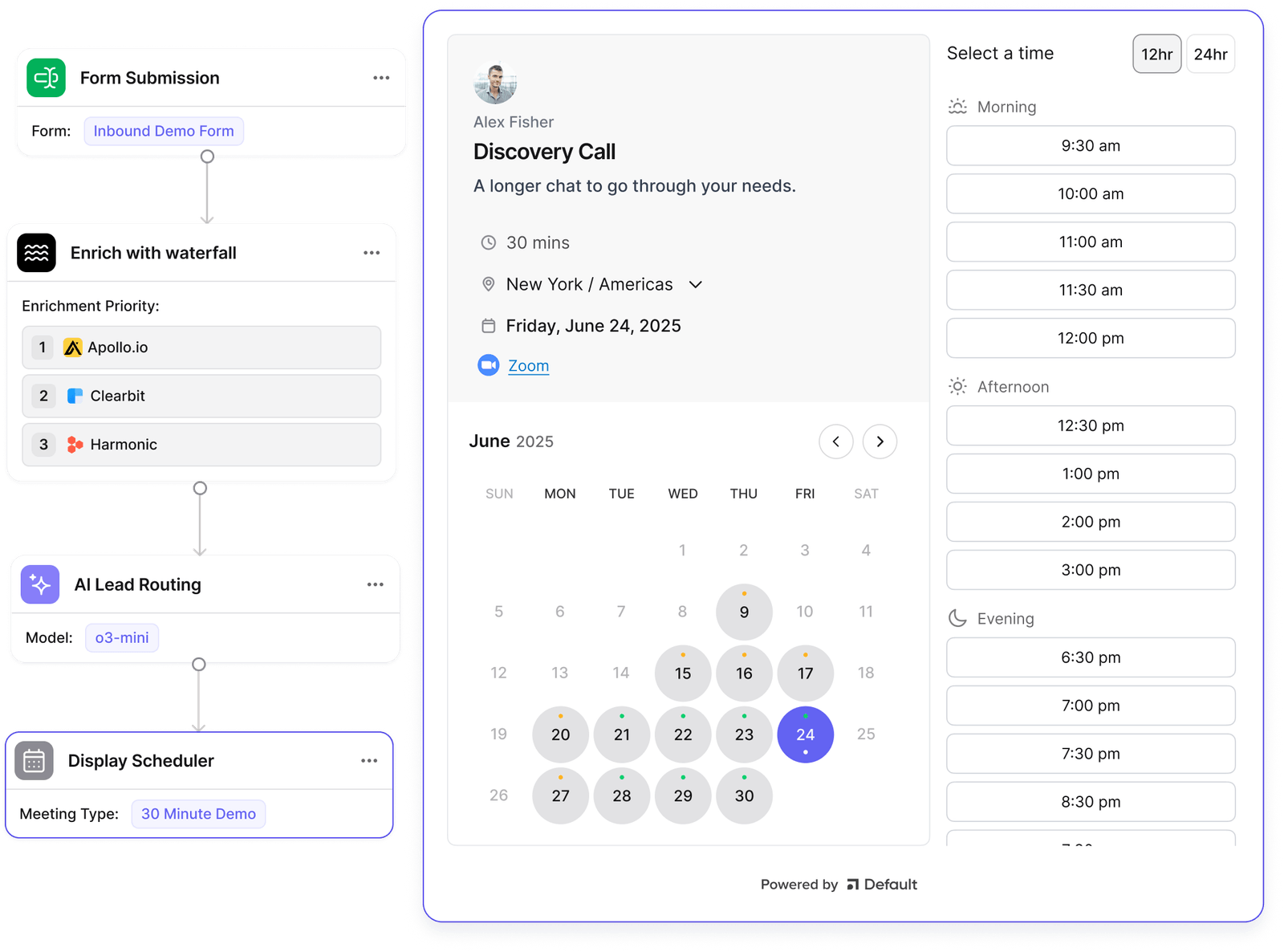
Connect rep calendars and book meetings instantly—based on routing logic, availability, and timezone. No more delays, missed SLAs, or cold buyers.
Pricing
Note: Default’s pricing includes a platform fee and a license fee, but you only pay for users who receive meetings, are listed as CRM owners, or are referenced in workflows. All editor seats are free.
Where Default shines
- Purpose-built for RevOps automation: It doesn’t just enrich—it orchestrates the flow from form fill to booked meeting, replacing 2–3 tools with one system.
- Control without code: RevOps teams launch, test, and evolve workflows without waiting on engineering.
- Faster speed-to-lead = more pipeline: Respond to high-intent leads in seconds, not hours. Conversion lift is immediate.
Where Default falls short
- Not ideal for cold outbound prospecting: For contact scraping and cold list-building, tools like Apollo or LeadIQ are a better fit—but Default can pair with them to power what happens after.
- Requires a modern stack: Default works best when paired with Salesforce, HubSpot, Segment, and enrichment APIs. Legacy CRMs can work, but may require additional setup or integration support.
- Doesn’t include a native database: Default isn’t a standalone contact database—it integrates with your preferred enrichment sources so you can stay flexible.
Customer reviews
“How clear and easy it is for my clients to book and understand the meeting type. The automation rocks!” - Cecelia G., verified G2 reviewer
“Our entire inbound engine runs on default.com, and we can't seem to imagine why anyone would not use this as a core tool in the marketing/sales stack! The product fixes every possible problem you could imagine when handling inbounds - be it qualification, routing or tracking.” - Pankaj S., verified G2 reviewer
Who Default is best for
- RevOps leaders: Managing complex inbound flows and territory-based routing
- GTM operators: Responsible for conversion speed and SLA adherence
- High-growth B2B teams: Scaling pipeline with no-code infrastructure
ZoomInfo – Best for enterprise teams with large budgets and aggressive growth goals
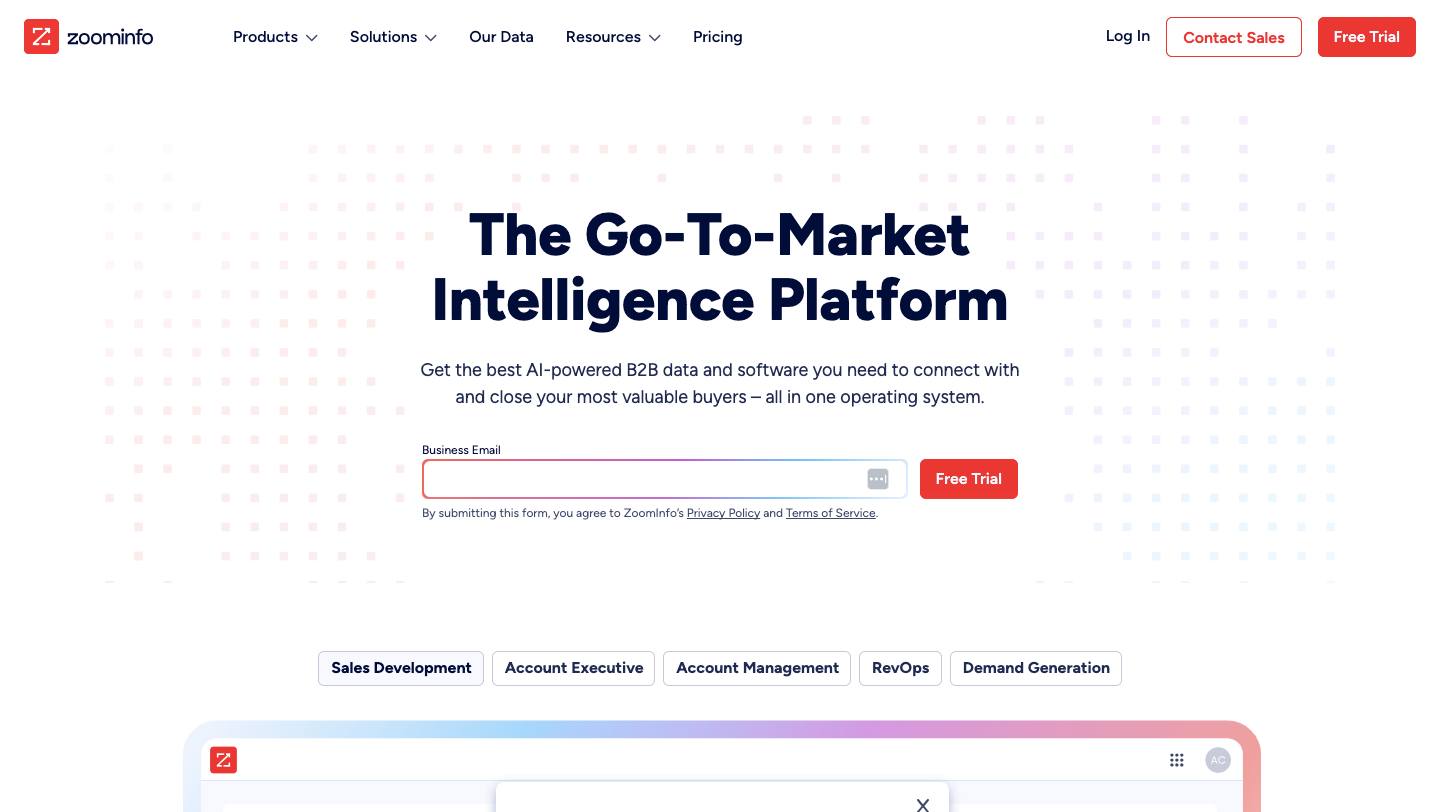
ZoomInfo remains the go-to for scale, especially if outbound is your primary motion.It offers one of the largest B2B databases on the market, with firmographic filters, intent signals, and a growing stack of GTM tools for prospecting, sequencing, and orchestration.
For RevOps teams powering large outbound engines, ZoomInfo delivers the infrastructure to go broad and deep. But it’s not a light lift. Between the pricing, implementation time, and admin overhead, it’s best suited for orgs with the budget (and bandwidth) to fully operationalize it.
Key features
- Enterprise-grade contact and company database: 100M+ records with verified business emails, job titles, firmographics, and buying committee mapping.
- Buyer intent tracking: Surface in-market accounts using ZoomInfo’s proprietary intent signals—based on topic-level content consumption across its partner network.
- Enrichment + workflow automation: Auto-update CRM records, trigger alerts when high-fit accounts spike in activity, and build outbound workflows via ZoomInfo’s orchestration suite.
Pricing
Note: ZoomInfo pricing is fully custom and varies based on the size of your team, use case, and data volume. You’ll need to contact their sales team to get a personalized quote. Free trials are available upon request.
Where ZoomInfo shines
- Massive data reach + depth: Ideal for enterprise teams prospecting across industries, segments, and geographies with a dedicated SDR or outbound function.
- Embedded intent + orchestration tools: ZoomInfo doesn’t just provide data—it layers on tools to execute outbound sequences, push alerts, and score accounts.
- All-in-one stack potential: Sales teams can run enrichment, sequencing, and analytics inside ZoomInfo’s ecosystem, reducing the need for external tools (if adopted fully).
Where ZoomInfo falls short
- High cost of ownership: ZoomInfo’s pricing model penalizes usage. You’ll pay more for enrichment volume, integrations, and feature access, making it tough for leaner teams.
- Heavy onboarding + admin dependency: Most teams require a dedicated ops resource or CSM to manage workflows, integrations, and cleanup, especially when scaling intent-based triggers.
- Slower to deploy inbound workflows: ZoomInfo isn’t built for real-time routing, booking, or form-triggered automation. You’ll need additional tooling (e.g., Default) to fill that gap.
Customer reviews
“The database is huge, and there are a lot of filters that allow you to slice your search into endless configurations (which can sometimes be overwhelming for less tech-savvy reps).” - Laura K., verified G2 reviewer
“Data for emails and number for Europe wasn't that great.” - Amanda A., verified G2 reviewer
Who ZoomInfo is best for
- Enterprise sales and RevOps teams: Operating high-volume outbound plays and equipped to manage the complexity, cost, and admin requirements of a large GTM engine.
Clearbit – Best for growth marketers personalizing web journeys and triggering outreach
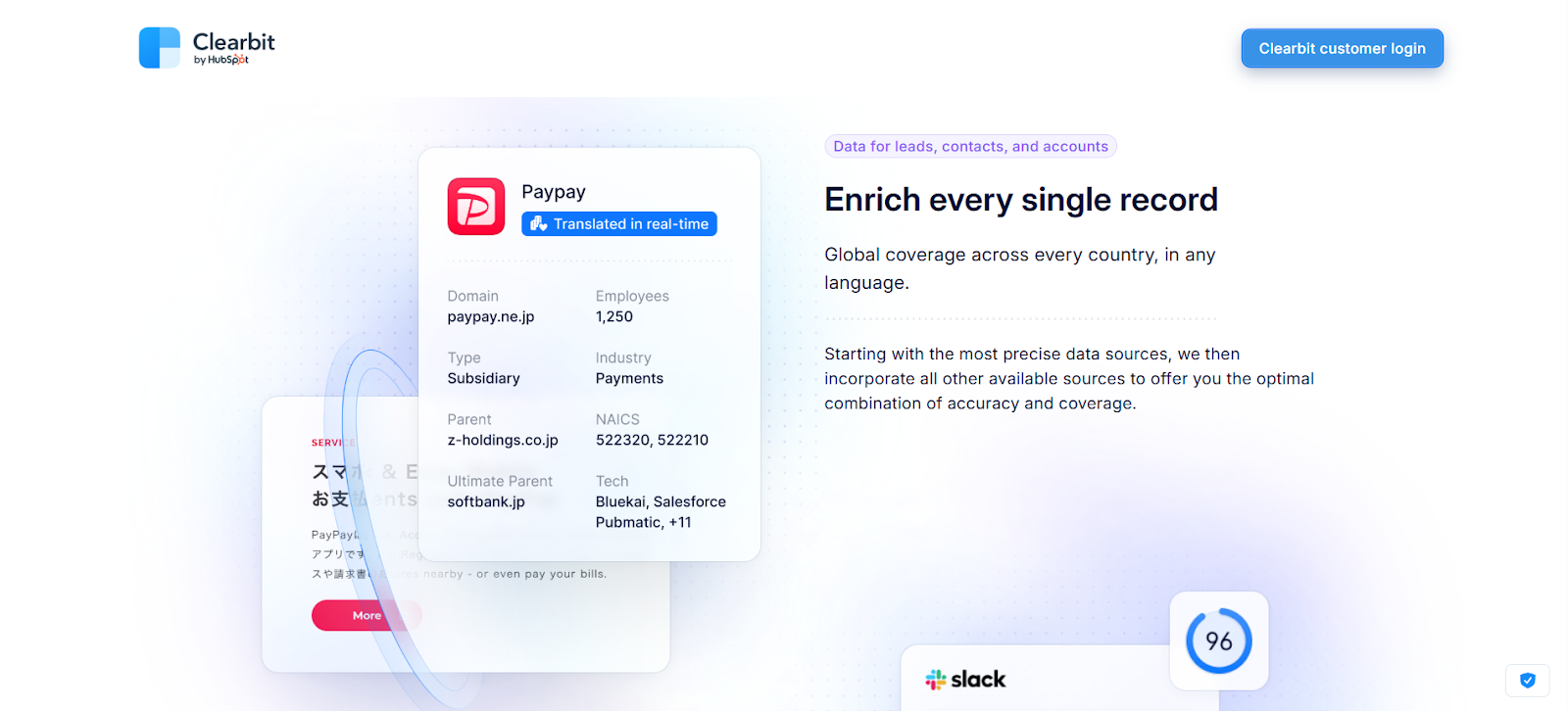
Clearbit is often the first pick for growth teams dialing in website personalization and audience targeting. It’s more than just enrichment—it acts as a real-time intel layer across your site and CRM, using IP resolution and enrichment APIs to surface high-fit visitors and sync them into ad platforms or outreach flows.
If you’re running a PLG or content-heavy funnel, Clearbit can light up a lot of otherwise hidden demand. Just know it’s not a full-funnel solution—you’ll still need other tools to qualify, route, or convert those leads once they raise their hand.
Key features
- Real-time visitor identification: De-anonymize web traffic by mapping IPs to company records, without a form submission.
- Enrichment APIs: Instantly enrich form submissions or CRM records using job title, company size, industry, and tech stack data.
- Ad audience syncing: Build and export dynamic segments to platforms like Google and LinkedIn for retargeting or ABM plays.
Pricing
Where Clearbit shines
- Inbound visibility without form fills: Identify and alert on high-fit accounts visiting your site, even if they never convert.
- Developer-friendly APIs: Growth teams love Clearbit’s flexibility—ideal for PLG flows or custom enrichment logic.
- Personalized funnel orchestration: Sync enriched segments to ads, fire off Slack alerts, or trigger custom flows in your marketing automation system.
Where Clearbit falls short
- No native lead routing or scoring: Clearbit tells you who is visiting, but it can’t qualify, score, or assign leads without ops-layer tools like Default.
- Outbound and data coverage are limited: It doesn’t provide list-building, scraping, or cold outreach workflows.
- Ops teams need dev support to scale: The real power lives in the API layer, which means you’ll need engineering help to unlock full value.
Customer reviews
“Clearbit has really great firmographic information, especially for larger or medium size orgs. Primarily limited to the US, though. Has been very easy to implement.” - verified G2 reviewer
“Once you're over their self-service limit, you can only increase your plan at least 4 times over, so there's no real room to grow realistically, either you spend loads for stuff you don't need, either you're going to go over your quota half-way through the month.” - Dan T., verified G2 reviewer
Who Clearbit is best for
- Inbound marketing and growth teams: Focused on website conversion, real-time intel, and triggered outreach across high-traffic web funnels.
LeadIQ – Best for SDR teams focused on fast outbound prospecting
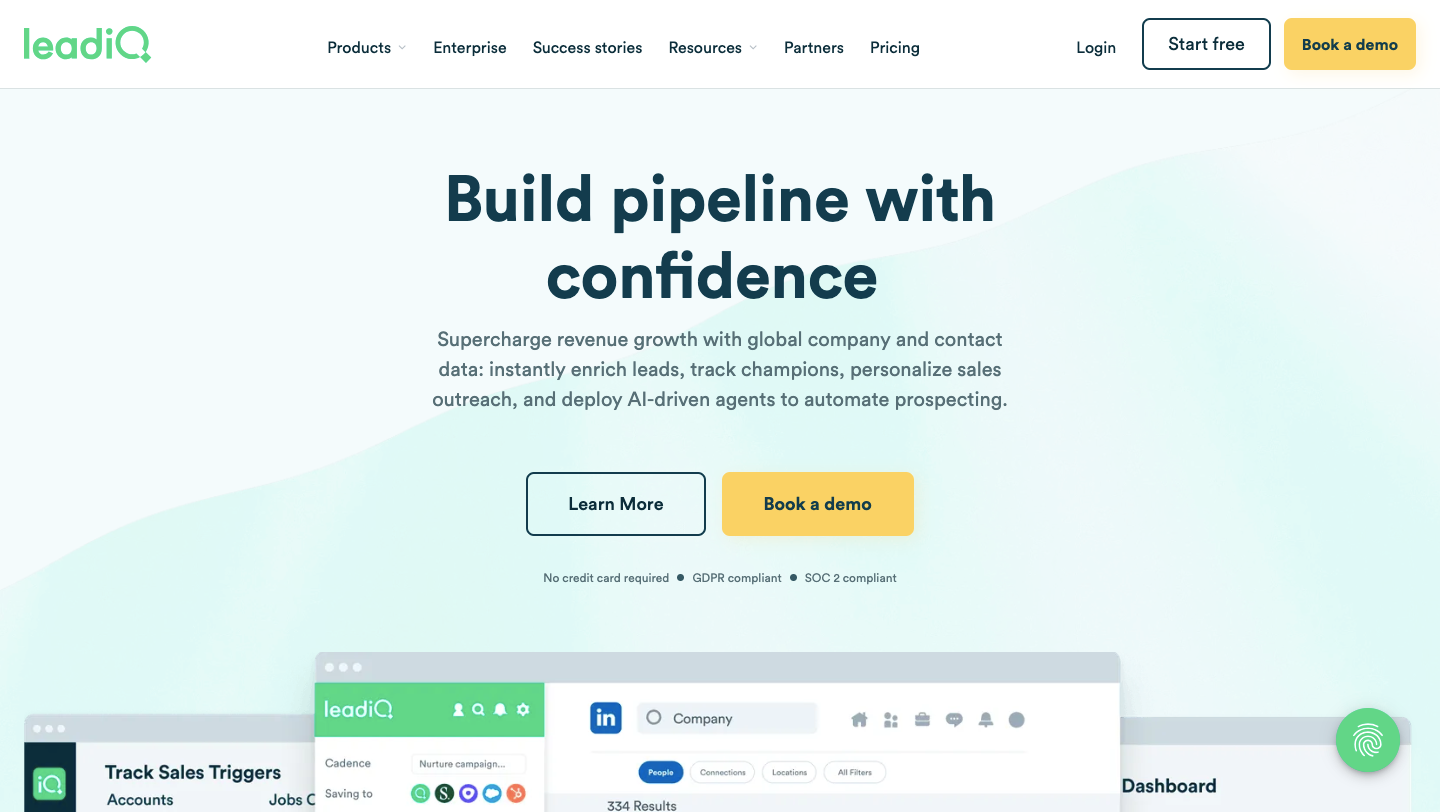
LeadIQ keeps it simple: fast outbound prospecting, without the extra baggage. It’s built for SDRs who live in LinkedIn—letting them scrape, verify, and push contact data straight into the CRM or sequencer in just a few clicks.
If your motion is purely outbound and speed is the priority, it does the job well. Just keep in mind: there’s no scoring, routing, or inbound support here—so if you’re running full-funnel ops, you’ll likely need something alongside it to manage the rest.
Key features
- Real-time LinkedIn and web scraping: Pulls verified emails and phone numbers from public sources via browser plugin—ideal for SDR list-building.
- CRM and sequence sync: Push leads directly into Salesforce, HubSpot, Outreach, or Salesloft with mapped fields and tags.
- Duplicate prevention: Flags existing contacts to avoid polluting your CRM with outdated or redundant records.
Pricing
Note: Unused credits do not roll over to the next month. So, to get full value from your plan, make sure your team consistently uses the allocated credits.
Where LeadIQ shines
- Speed to prospect list: SDRs can generate lists and push to sequencing tools in minutes, not hours.
- Simple deployment: Chrome-based workflow means no IT support required to get started.
- Focused on outbound workflows: Perfect for teams with cold email/call KPIs—not burdened with inbound routing or scoring complexity.
Where LeadIQ falls short
- No lead qualification or routing: Leads captured aren’t scored, enriched further, or routed—leaving that burden to RevOps.
- Shallow enrichment vs. enterprise tools: You won’t get firmographic overlays, technographic data, or multi-source validation.
- Limited data coverage beyond LinkedIn: Great for social scraping, but weak across other web and third-party data channels.
Customer reviews
“I like the ease of use and especially enjoy the plug ins where I can highlight a name and search their contact info all in one step.” - Dani L., verified G2 reviewer
“It gives me a lot of wrong numbers; lots of times I'm calling the wrong person. Sometimes prospects can't be imported from LeadIQ into my outreach tool and its not always clear why.” - Matt Z., verified G2 reviewer
Who LeadIQ is best for
- Outbound SDR teams: Focused on building cold outreach lists at speed, not managing lead scoring, routing, or inbound workflows.
Apollo – best for lean teams needing enrichment + outreach in one platform
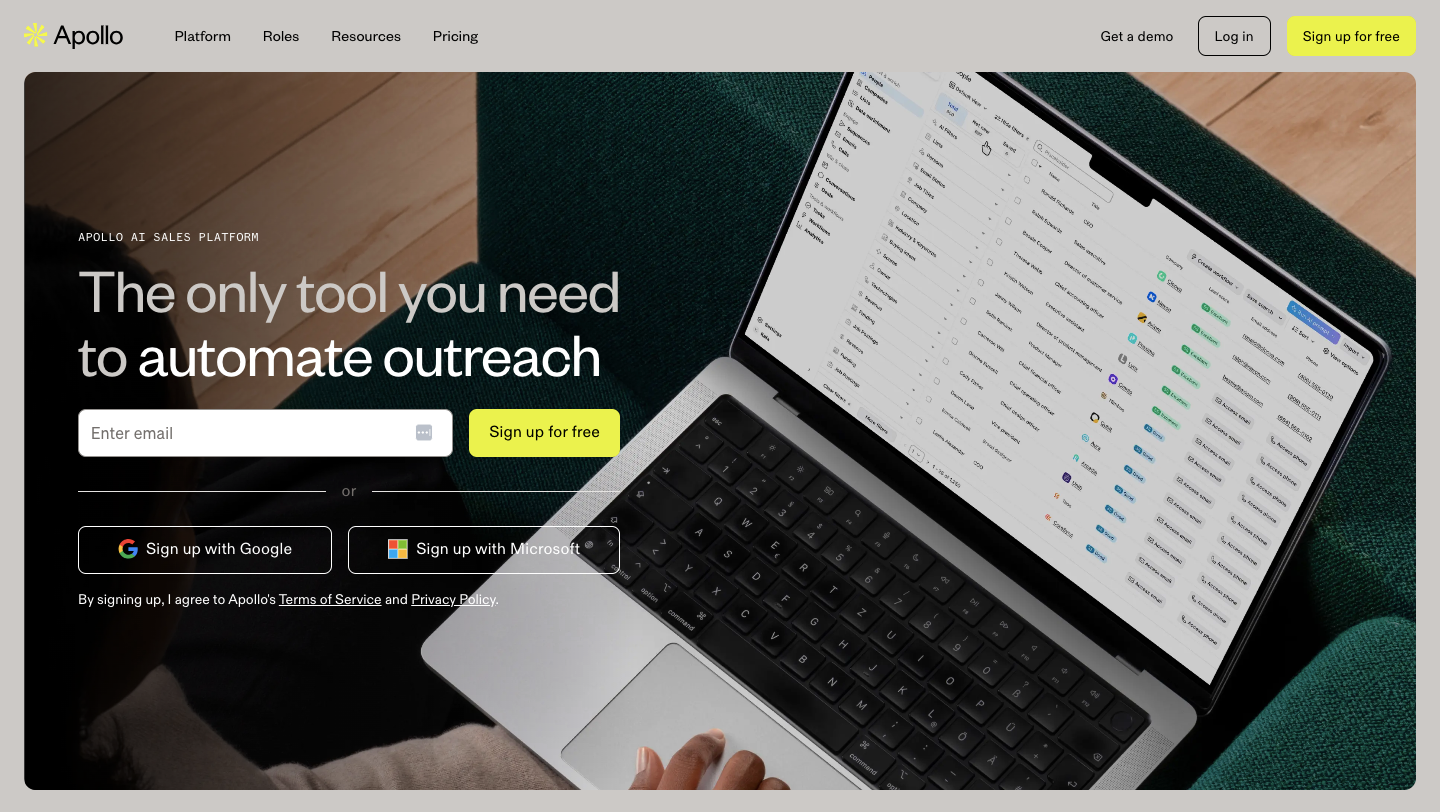
Apollo is a solid starting point for lean teams looking to prospect, sequence, and manage contacts all in one place. It rolls outreach, enrichment, and a lightweight CRM into a single platform—making it a strong fit for early-stage GTM teams that need to move fast without stacking tools or ballooning costs.
Just know it’s designed for simpler workflows. Once you start routing leads, enforcing SLAs, or layering in real-time scoring, Apollo starts to feel like a ceiling rather than a system.
Key features
- Integrated outreach suite: Email sequencing, dialer, and CRM baked into one platform—no third-party tools required.
- B2B contact database: Search across millions of business records using firmographic filters and basic intent signals.
- Basic enrichment and sync: Auto-fills lead fields and syncs to Salesforce or HubSpot, though field mapping is rigid.
Pricing
Note: Some features, like call recordings and AI insights, are capped by minutes, which can impact high-volume teams if not monitored.
Where Apollo shines
- All-in-one GTM starter stack: Combines data, outreach, and CRM-lite tools into a single affordable platform.
- Fast time-to-value: Onboarding takes hours—not weeks—ideal for lean teams with no ops headcount.
- Low-risk entry point: Transparent pricing and a robust free tier allow for easy piloting before full adoption.
Where Apollo falls short
- Shallow enrichment logic: Lacks multi-source enrichment or dynamic scoring—leads aren’t prioritized for sales readiness.
- No routing or qualification workflows: Can’t assign reps, apply logic, or automate handoffs—RevOps teams will need a workflow layer like Default.
- Rigid CRM integrations: Syncing is limited, with few hygiene tools—expect manual effort to keep records clean and up to date.
Customer reviews
“I love that I can consolidate multiple platforms and tools into one using Apollo. Lead generation, creating outbound strategy, and contacting prospects via phone/email is great.” - Amman K., verified G2 reviewer
“If you're not careful enough (like I was) you will end up spamming irrelevant persons with the wrong message without you even knowing it. Apollo generates email text and emailing lists for you and it's not clear when these campaigns are running.” - verified G2 reviewer
Who Apollo is best for
- Early-stage GTM teams: Needing affordable prospecting, enrichment, and basic CRM sync—all in a single, easy-to-deploy package.
Cognism – Best for EMEA-based sales teams needing GDPR-compliant contact data
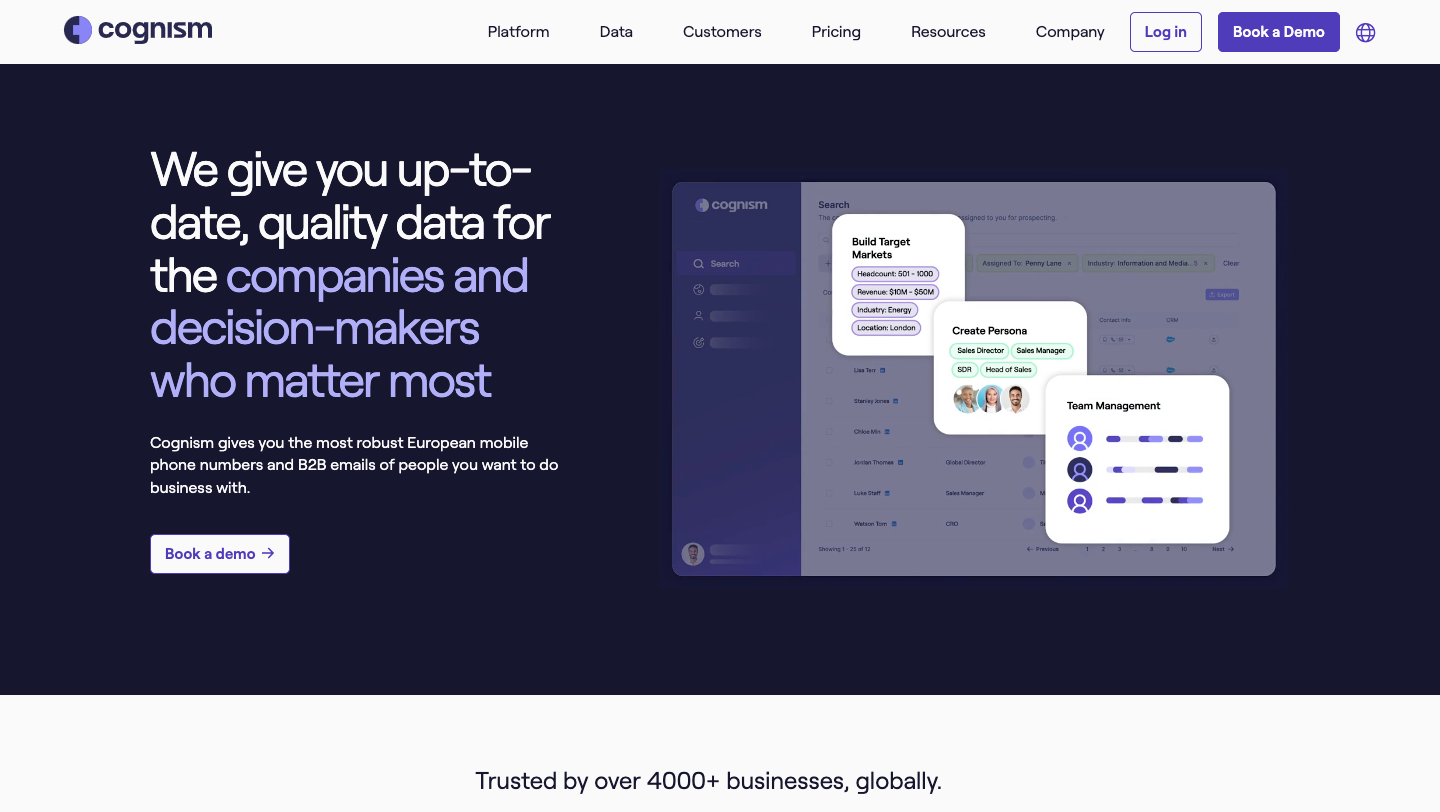
For sales teams operating in Europe, Cognism sets the bar on compliant data. Its database is built for GDPR from the ground up, offering verified mobile numbers and legally safe outreach across EMEA. The standout? Diamond Verified data—human-checked phone numbers that actually connect.
It’s a more premium option, but for RevOps teams selling in regulated markets, that level of trust and accuracy is often non-negotiable.
Key features
- GDPR-first database: Every contact is sourced, processed, and stored in accordance with EU privacy regulations—critical for legal outreach.
- Diamond Verified mobile numbers: Human-reviewed validation layer ensures phone data is live, accurate, and legally safe for outbound.
- Intent + behavioral triggers: Tracks buyer activity across digital properties to identify warm accounts in-market.
Pricing
Note: Cognism’s pricing is fully customized based on your needs. To receive a quote, you’ll need to fill out their pricing form so the team can match you with the best-fit package.
Where Cognism shines
- Best-in-class GDPR compliance: Built from the ground up for privacy-first sales orgs—trusted by data protection officers across Europe.
- Superior mobile data in EMEA: Diamond Verified coverage gives outbound teams reliable phone data where most tools fail.
- Trust signals for regulated buyers: Selling into legal, healthcare, or finance? Cognism’s compliance posture gives you credibility.
Where Cognism falls short
- Limited inbound automation: No workflows for lead routing, scoring, or meeting booking—requires pairing with platforms like Default.
- Not ideal for U.S.-focused GTM: U.S. data coverage exists but isn’t as strong as its European offering.
- Higher cost of entry: Premium pricing reflects its compliance investment, out of reach for early-stage teams.
Customer reviews
“As an Asana Account Executive, I've seen firsthand the importance of targeted outreach. Cognism has been a game-changer for our sales team.” - Conor M., verified G2 reviewer
“There is a need for it to improve its prospecting capabilities, also it can improve it's customer support.” - verified G2 reviewer
Who Cognism is best for
- EMEA-based RevOps & sales teams: Needing GDPR-safe data, accurate mobile numbers, and verified contacts to run compliant outbound in regulated markets.
Seamless.AI – Best for outbound teams prioritizing lead volume over precision
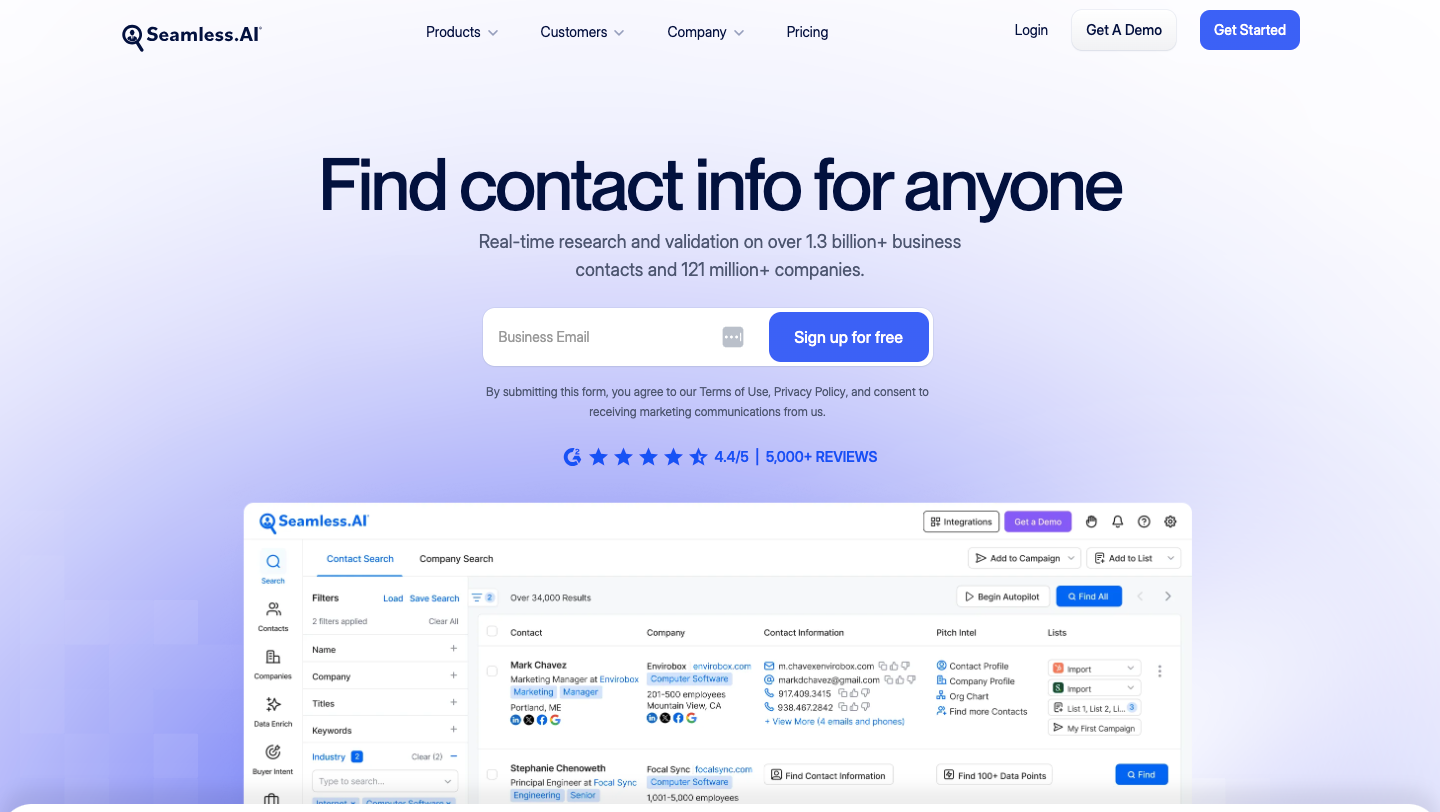
Seamless.AI is built for speed—and lots of it. It’s a volume-first contact scraping tool that pulls phone numbers and emails in bulk, fast, and at a low cost. If your team’s running high-tempo outbound plays and needs to fill the top of funnel quickly, Seamless delivers.
That said, it’s not built for depth. There’s no enrichment layering, no routing logic, and no CRM hygiene—so for RevOps teams focused on precision and conversion, it’s best used as a tactical add-on, not your core system.
Key features
- Real-time contact scraping: Extracts emails and phone numbers from LinkedIn, company sites, and search engines instantly.
- Chrome extension for LinkedIn prospecting: Prospect directly from LinkedIn and add contacts to lists with one click.
- Bulk export and CRM sync: Push scraped lists into Salesforce or download CSVs for upload into other platforms.
Pricing
Note: Seamless.AI doesn’t display pricing publicly for Pro and Enterprise plans; you’ll need to contact their sales team. Credits refresh daily in the Pro plan, but advanced features like enrichment, AI assistant, and buyer intent require paid add-ons.
Where Seamless.AI shines
- Maximum volume, minimal friction: Perfect for SDRs who need to generate large lead lists fast, especially in early-stage outbound motions.
- Fast onboarding, no admin overhead: Operates via Chrome extension and browser interface—no ops team needed to get started.
- Flexible for short-term campaigns: Useful for high-tempo sprints or list-building marathons where quality is a secondary concern.
Where Seamless.AI falls short
- Unreliable data accuracy: Contact records aren’t manually verified—expect bounces, bad phone numbers, and mismatches.
- No workflow or scoring logic: Can’t qualify, score, or route leads—teams still need platforms like Default for automation and hygiene.
- Non-compliant for regulated industries: Doesn’t meet GDPR or CCPA standards—risky for teams operating under strict data privacy laws.
Customer reviews
“It works and the information it produces is quite accurate and fresh. It integrates with HubSpot and other CRMs quite well and easily setup.” - Alex S., verified G2 reviewer
“One dislike I have is that you can't set the quality of the lead info accuracy BEFORE you scrape. So you have to spend your 1000 credits a day to scrape junk or good leads, and you can only filter AFTER you scraped.” - Bianca F., verified G2 reviewer
Who Seamless.AI is best for
- Outbound SDR teams: Focused on generating large contact lists quickly and willing to trade data precision for scale.
Kaspr – Best for EU-based SMBs looking for fast, lightweight enrichment
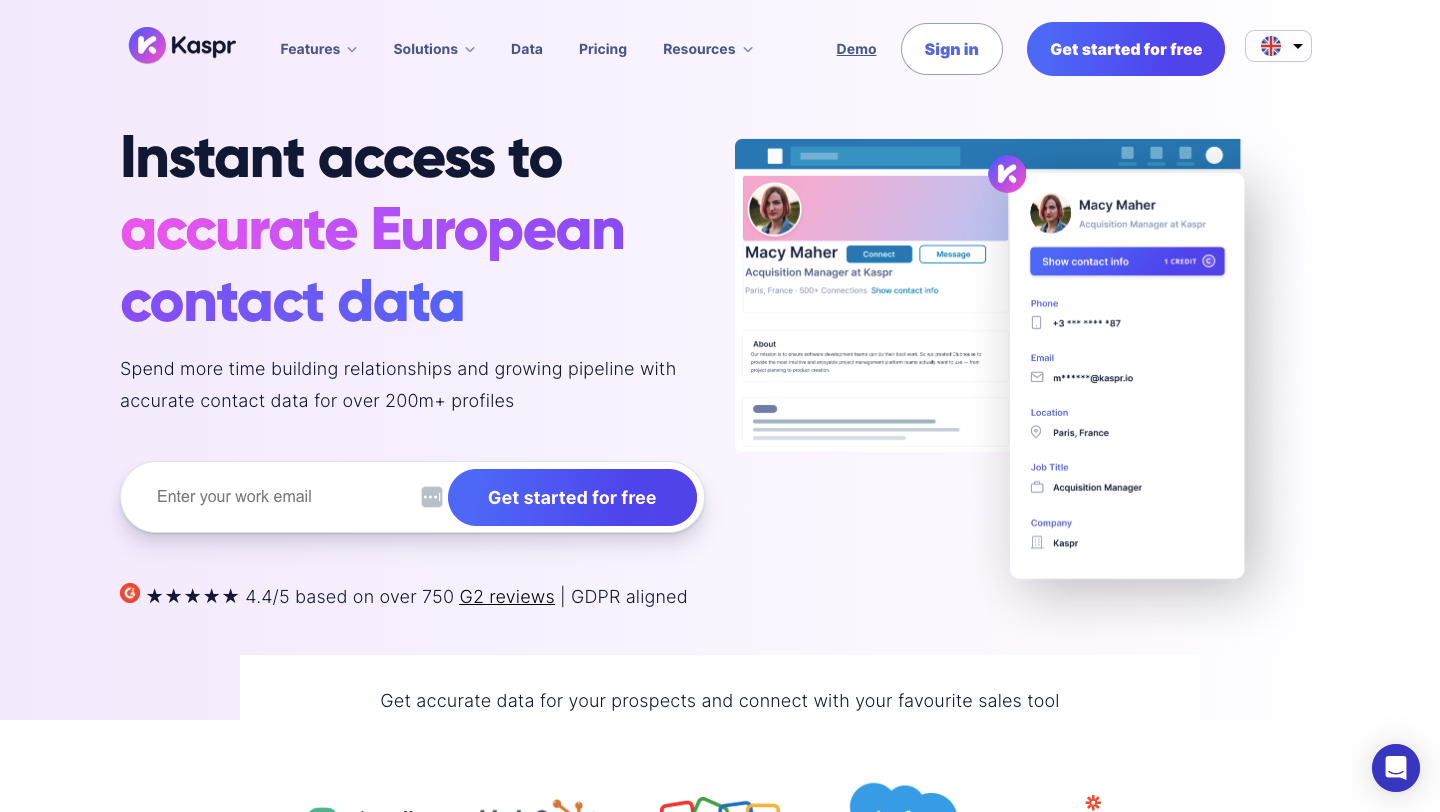
Kaspr is a lightweight LinkedIn scraper that’s popular with small sales teams across Europe. It’s a simple Chrome extension that pulls emails and phone numbers fast—perfect for lean SDR teams that want to spin up outreach without wrangling complex integrations or admin overhead.
It won’t give you orchestration or scoring logic, but for quick-hit prospecting on LinkedIn, it’s an efficient tool to have in the stack.
Key features
- LinkedIn contact extraction: Pull email addresses and mobile numbers from profiles via Chrome extension—no extra tools needed.
- Inline enrichment widget: Instantly displays enriched data like company size, role, and phone number on LinkedIn.
- CSV export and basic CRM sync: Download contact lists or sync to CRMs like HubSpot and Pipedrive.
Pricing
Note: Kaspr offers shared credits, export limits, and API access in mid to high-tier plans, but credits do not roll over. You’ll need to contact sales for Enterprise pricing.
Where Kaspr shines
- Quick-start enrichment for SDRs: Lightweight, frictionless tool for grabbing contact info straight from LinkedIn.
- Localized fit for EU markets: Strong adoption across France, Germany, and other European countries—built with GDPR awareness in mind.
- No setup or training required: Simple enough for non-technical users to onboard in minutes.
Where Kaspr falls short
- Not a full GTM solution: Lacks scoring, routing, CRM deduplication, or any real automation logic.
- Limited data and integrations: Only basic firmographics; no intent, technographics, or multi-source enrichment.
- Doesn’t scale for growing ops teams: Once workflows get complex, teams will outgrow Kaspr and need tools like Default or Clearbit.
Customer reviews
“I appreciate Kaspr for its user-friendly experience, especially its seamless integration with LinkedIn which simplifies accessing and utilizing data.” - Daria R., verified G2 reviewer
“Complicated process in integrating with other apps.” - Natheem a., verified G2 reviewer
Who Kaspr is best for
- Small sales teams in Europe: Looking for a fast, no-frills way to extract contact info from LinkedIn without building a full RevOps stack.
UpLead – Best for lean teams needing flexible, pay-as-you-go enrichment
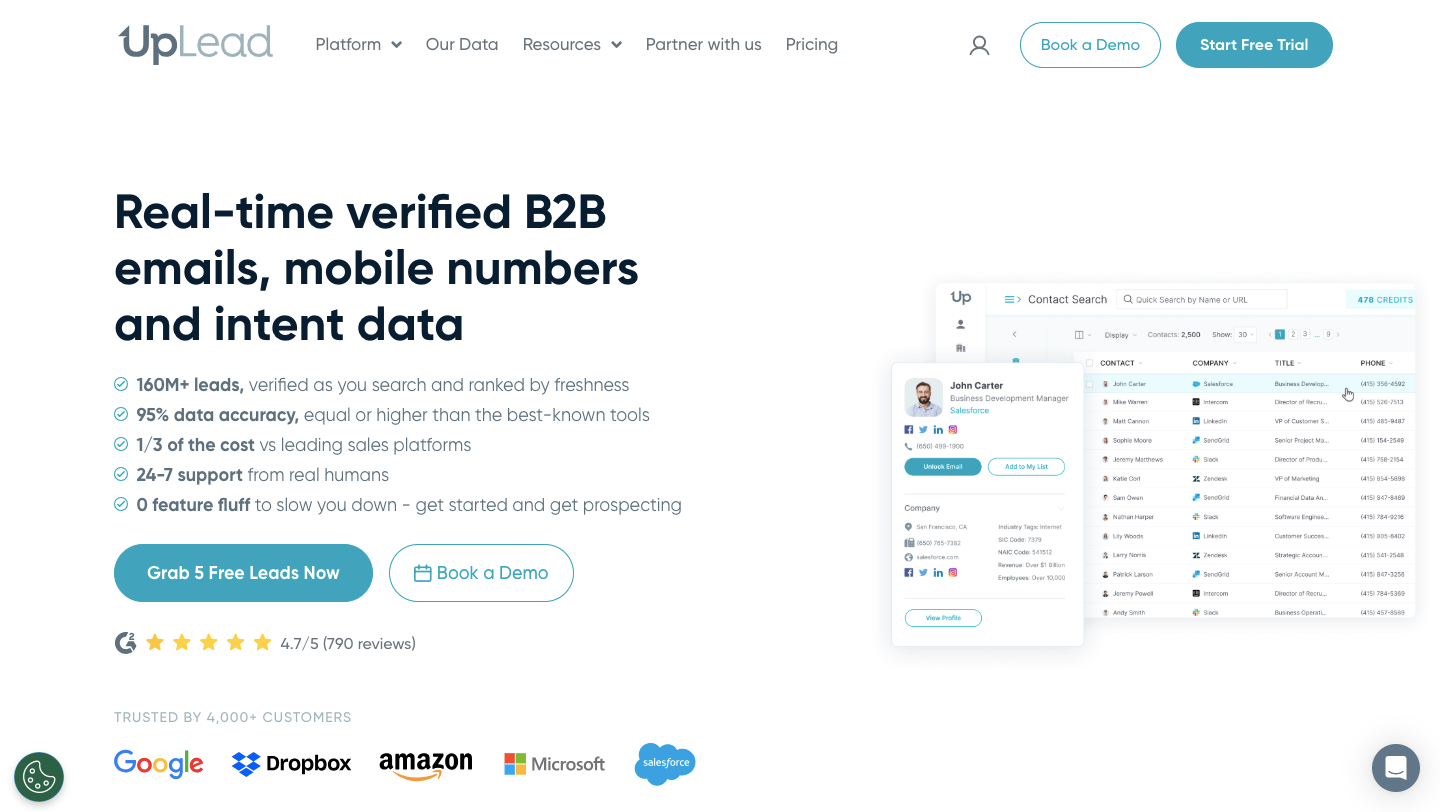
UpLead is a reliable pick for teams that need clean, verified contacts—without committing to a big contract. It offers real-time email verification, firmographic filters, and credit-based pricing, which makes it especially appealing for early-stage or budget-conscious GTM teams building outbound lists on demand.
Just know it’s a list-builder, not a workflow engine. There’s no routing, scoring, or CRM cleanup—so if your funnel depends on automation or inbound speed, you’ll need another layer to handle that.
Key features
- Verified B2B contact database: Access millions of business contacts with real-time email verification to reduce bounces.
- Firmographic and technographic filters: Segment contacts by role, company size, industry, and technology stack.
- Credit-based downloads: Export contact lists on demand—no long-term contracts or per-seat pricing.
Pricing
Note: UpLead offers a 7-day free trial with 5 credits to test its verified contact data and Chrome extension. The Professional plan requires annual billing and a custom quote.
Where UpLead shines
- Ideal for outbound list-building: Helps sales and marketing teams pull clean, verified contact lists for campaigns without friction.
- Budget flexibility: Credit-based pricing is a rare find, especially helpful for small teams with seasonal or ad hoc prospecting needs.
- Fast time-to-value: Clean UI and real-time verification make onboarding and execution quick—even without ops support.
Where UpLead falls short
- No automation layer: Lacks routing, enrichment triggers, or scheduling workflows—RevOps teams still need a tool like Default to handle lead flow.
- Limited intent or behavioral data: Doesn’t offer signals or alerts when contacts show interest—strictly static data.
- Not designed for inbound or dynamic workflows: No form capture, CRM deduplication, or real-time logic—better suited to outbound teams only.
Customer reviews
“The intuitiveness of the tool makes the learning curve a breeze. The support has been fantastic, as well.” - Anthony P., verified G2 reviewer
“Sometimes there are many invalid emails and I pay tickets to know it.” - Ilaria M., verified G2 reviewer
Who UpLead is best for
- Budget-conscious GTM teams: Needing clean contact lists, flexible pricing, and reliable enrichment, without platform bloat or long-term commitment.
Reasons to consider a Lusha alternative
Lusha delivers basic contact enrichment—but that’s where it stops. And for modern RevOps teams dealing with speed, scale, and lead quality, static data just creates new bottlenecks.
If your team is experiencing any of the following challenges, it’s time to look for a smarter, automation-ready solution like Default.
1. You’ve outgrown static enrichment
Lusha provides a snapshot of contact data, but it doesn’t trigger any next steps.
If your inbound funnel needs real-time scoring, routing, or scheduling, Default enables dynamic workflows that react to every form submission in the moment.
Default lets you enrich, score, and route leads automatically—before they ever hit your CRM.
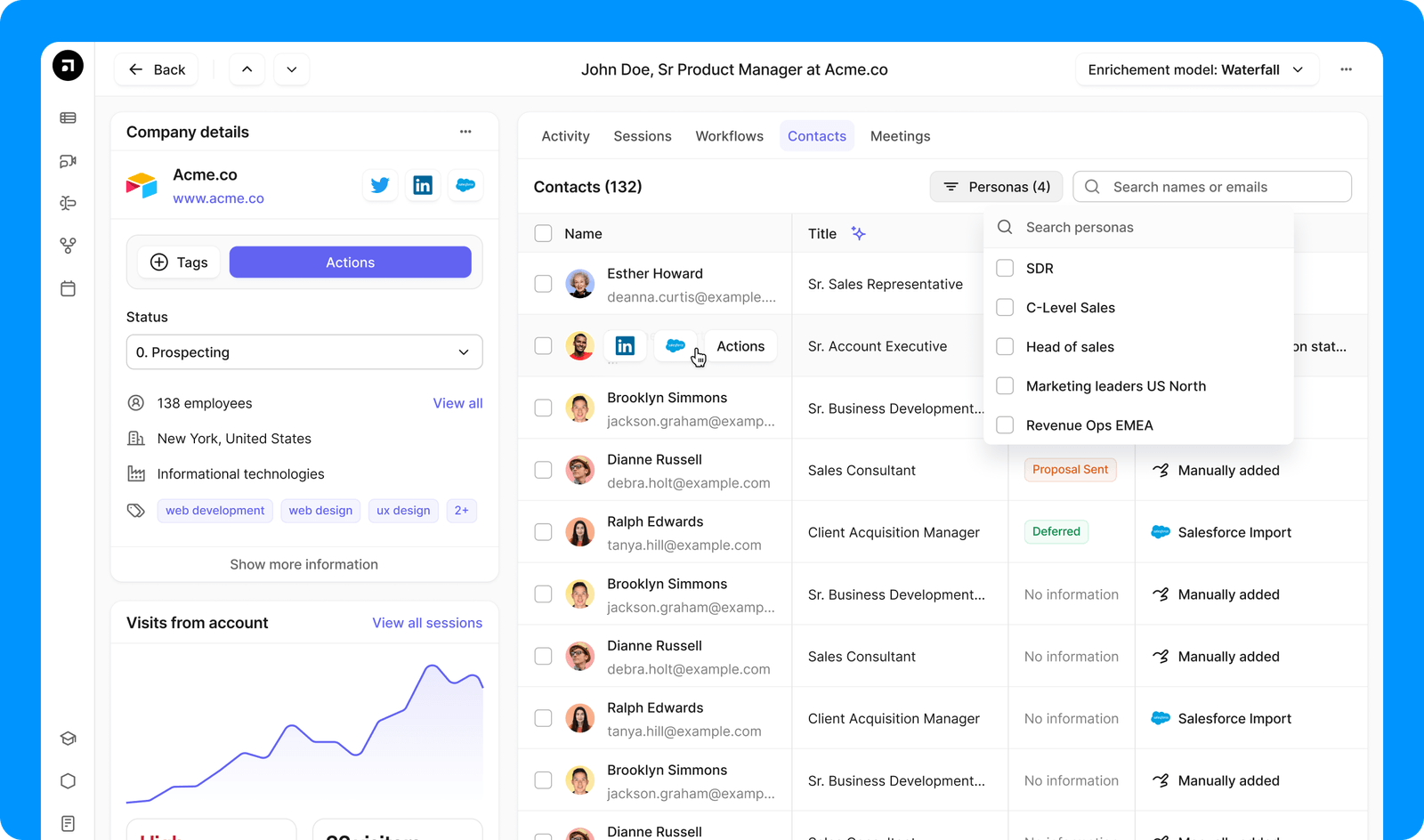
2. No control over lead ownership or logic
Lusha doesn’t help you assign leads by territory, product line, or sales stage—everything’s manual.
Default puts RevOps in control with a no-code logic builder. Route leads based on custom fields, round-robin, capacity, or fallback paths in seconds.
Manage lead ownership dynamically—without engineering tickets.
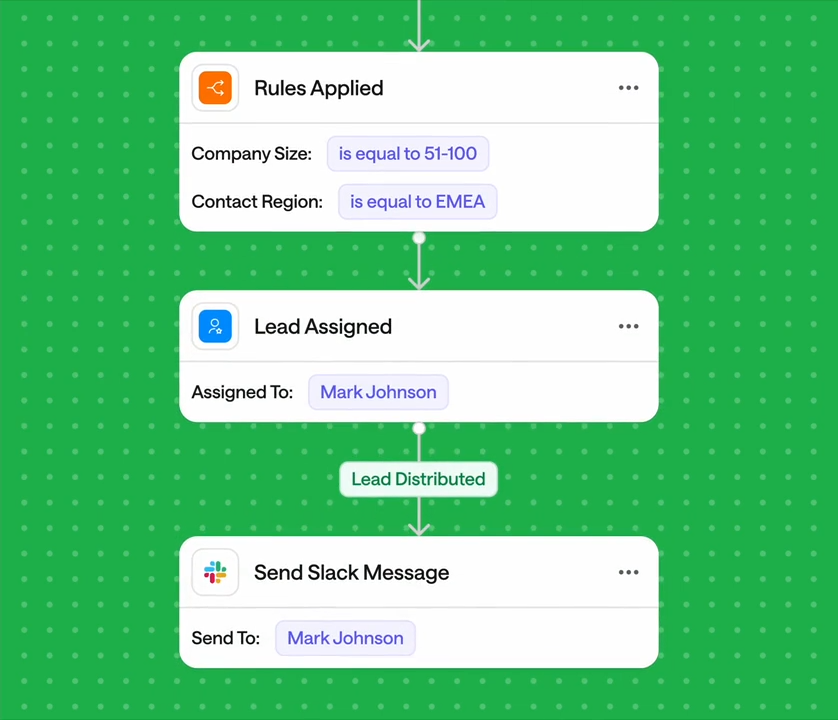
3. You're missing high-intent moments
Lusha doesn’t detect when your highest-fit accounts are filling forms, browsing pricing pages, or requesting demos.
With Default, you can detect intent signals in real time, qualify leads instantly, and auto-book meetings before competitors ever respond.
Convert high-intent leads in seconds, not hours.
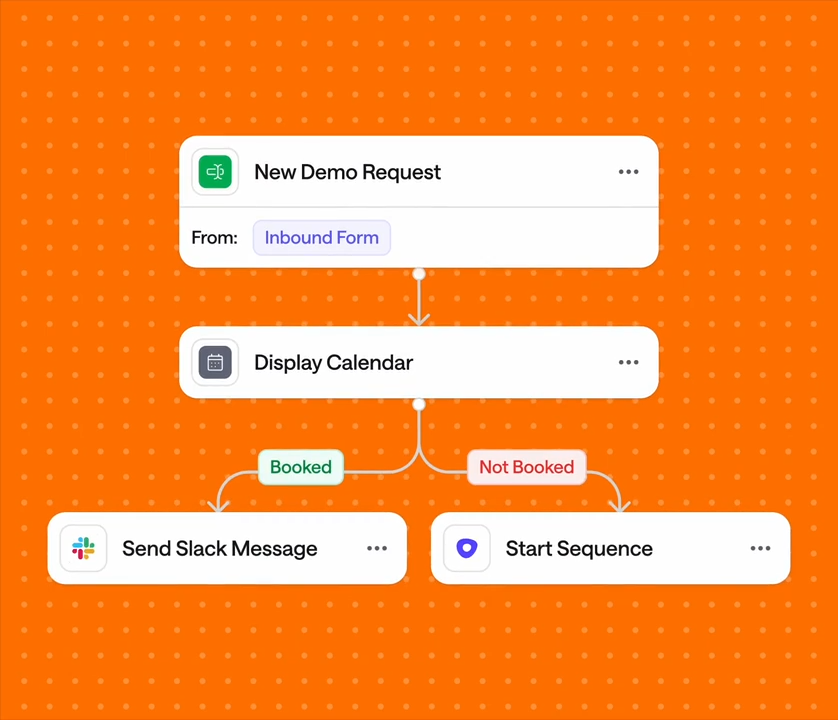
4. Your CRM is bloated with messy data
Lusha enriches contacts but doesn’t clean, deduplicate, or validate them—leaving RevOps to clean up the mess manually.
Default performs pre-CRM enrichment and validation, ensuring clean, standardized records before anything syncs to Salesforce or HubSpot.
Say goodbye to duplicate leads and bad data in your CRM.
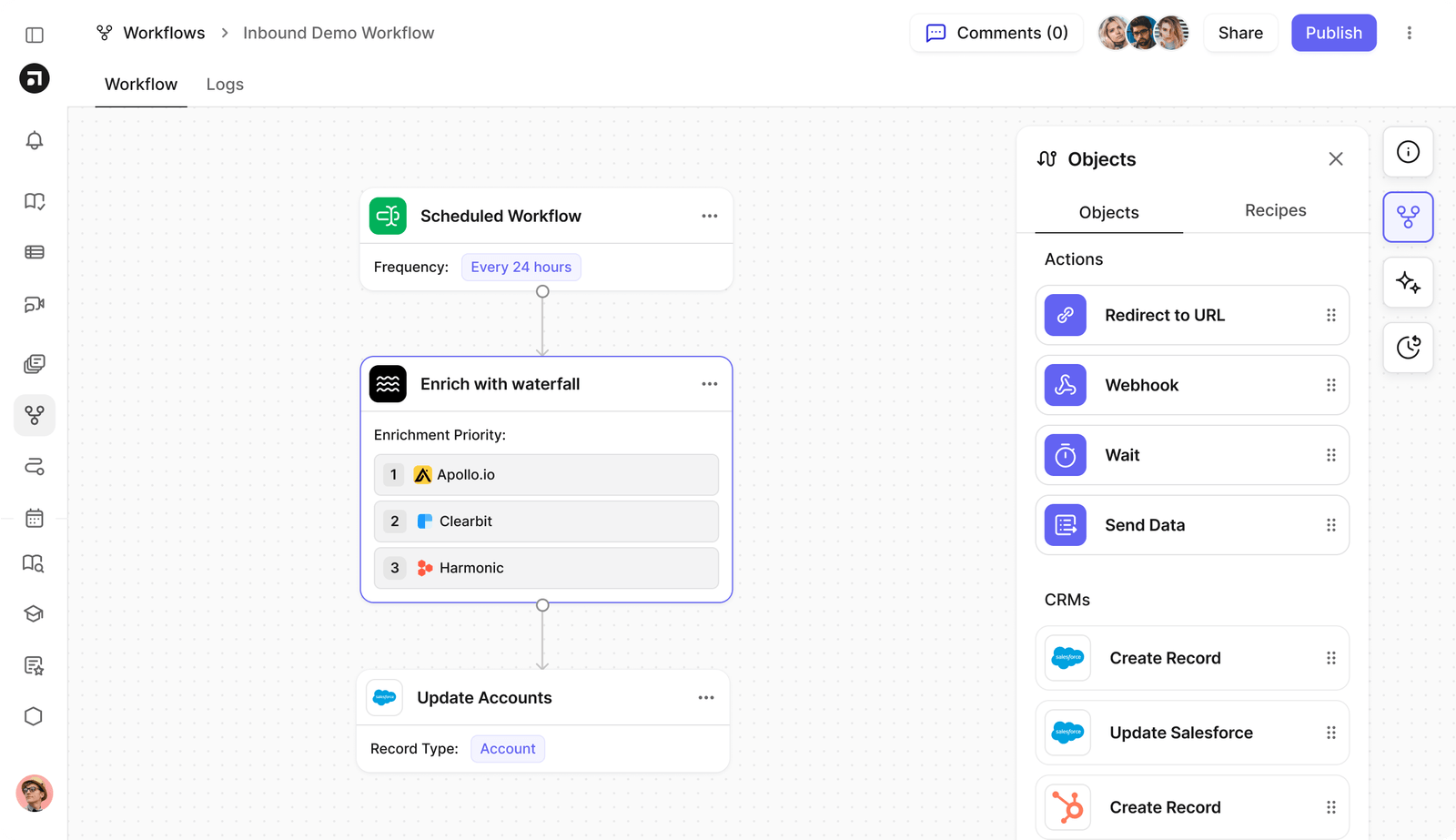
5. You’re stitching tools together manually
Using Lusha often means juggling enrichment tools, routing workflows, and scheduling platforms—each with its own pricing and integration overhead.
Default replaces that patchwork with a single automation layer purpose-built for RevOps.
Unify enrichment, routing, scoring, and scheduling in one platform.
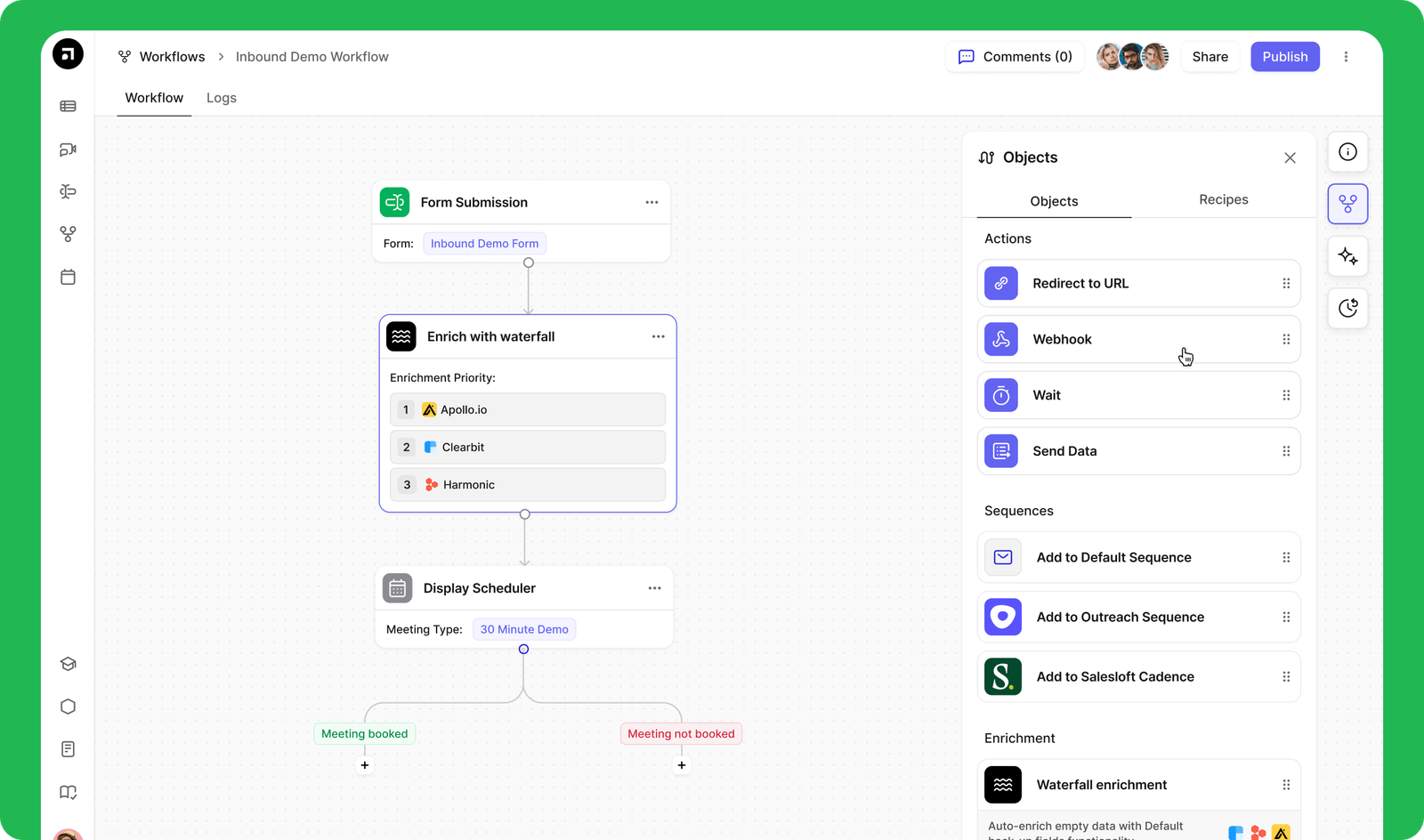
Default is the all-in-one sales tool for end-to-end sales
Most teams don’t need more contact data—they need to do more with the data they already have. That’s the real gap.
If you're spending time routing leads manually, chasing down SLAs, or stitching tools together to qualify and convert inbound—Default makes that work go away. It routes, scores, and books meetings automatically.
No engineering. No hacks. Just clean workflows that actually convert.
And if you're running outbound or building lists, sure—there are tools that can help at the surface level. But when you're ready to scale the system behind your pipeline, you’ll need something built for real-time ops.
That’s what Default is.
See what happens when your funnel runs itself.
Book your live demo today.
Conclusion

Former pro Olympic athlete turned growth marketer! Previously worked at Chili Piper and co-founded my own company before joining Default two years ago.
Accelerate your growth with Default.
Revamp inbound with easier routing, actionable intent, and faster scheduling








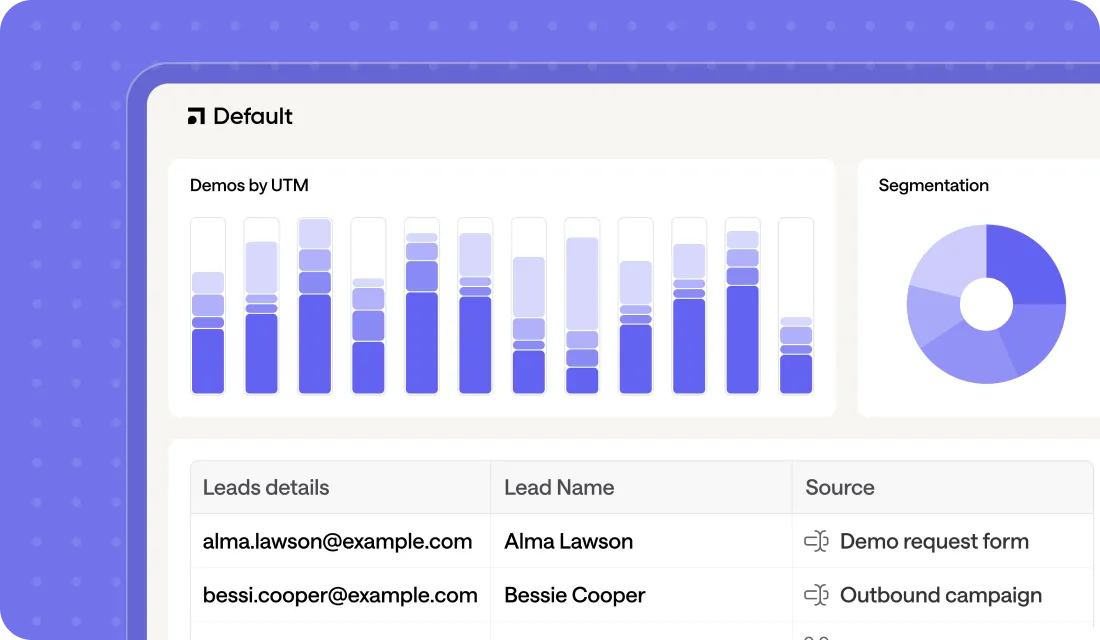
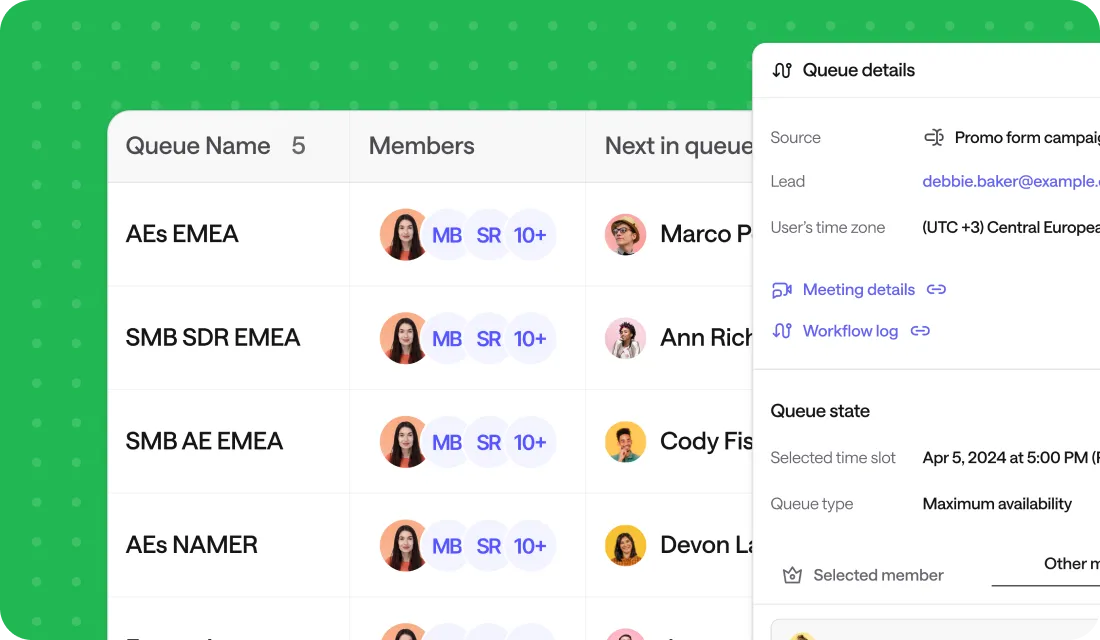


.png)


